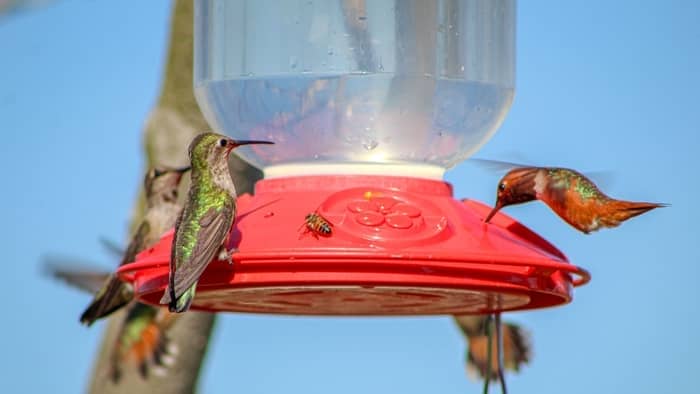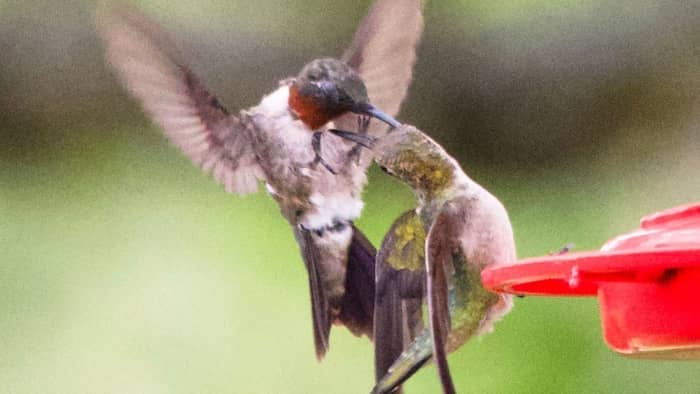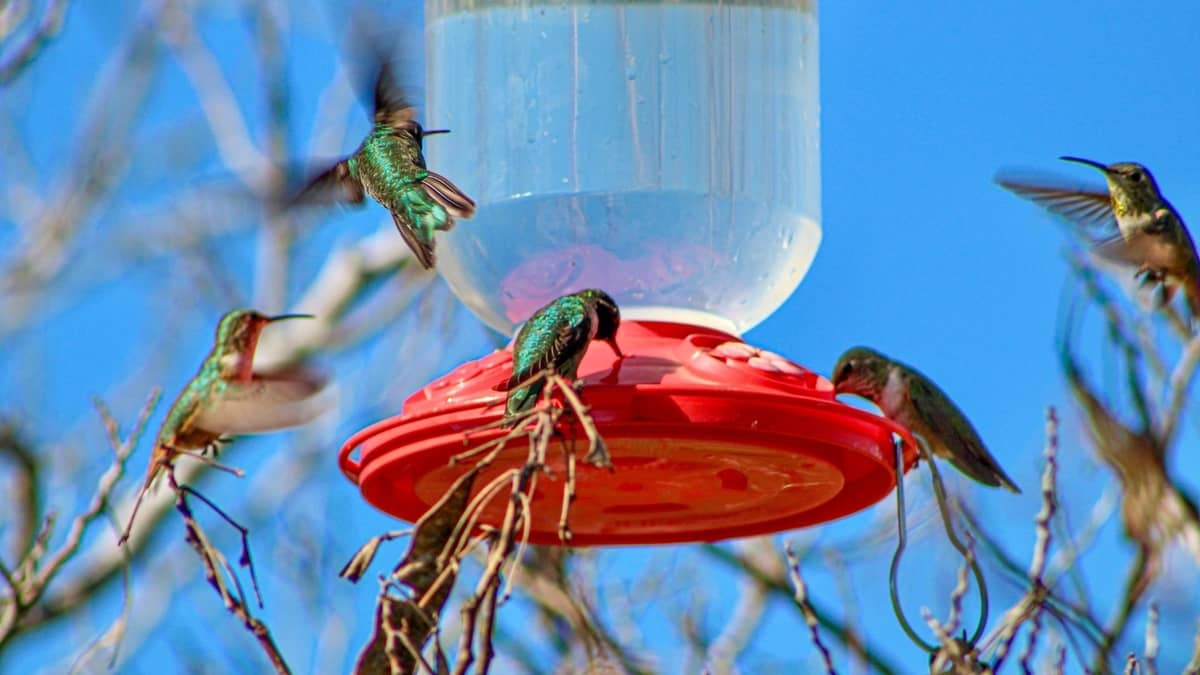It is usually an intriguing sight watching hummingbirds flitting around in a place. It could be in your garden or backyard. But have you ever wondered what hummingbird behavior at feeders is? Like can you tell if flitting around means they are fighting or playing with each other?
It’s actually pretty fascinating studying these fairly tempered birds. Yes, they have quite some temper and can be aggressive but all these can be amusing to watch.
In order to get their attention, get them stationed in a place from time to time. People indulge them by feeding them the sweet solution in feeders that has designs that attract these hummers.
And bear in mind that this hummingbird behavior at feeders can be worrisome. A bully or more amongst the birds will want to dominate the feeders.
How Time Determines The Extent To Which Hummingbirds Show Aggression
The change in the time of the year determines how angry and aggressive hummingbirds become. During the late spring or early summer, hummingbirds are usually in a high state of aggressiveness. The angriest amongst them become way more aggressive up until fall.
This is because they either want to continue dominating feeding territories. This is typical of the male. Then the angriest female amongst them shows more aggression as they protect their nest from both males and females.
Always bear in mind that they are naturally aggressive and territorial birds.

What Time Of Day Are Hummingbirds Most Likely To Feed?
Hummingbirds need energy at all times. They use up a high amount of energy to keep them going all day considering how fast they flap their wings.
Certain weather factors and the different types of species with migratory patterns can determine when hummingbirds will come to feed.
The period of migration is the time when most hummingbirds come to the feeders. And the reason for their migration mostly is for breeding. So, you can typically attract hummingbirds to your yard by putting out feeders close to the time when they migrate.
They eat nearly all the time like every 10 minutes while they are active during the day. You’d be surprised to know that they take in lots of sugar that are about half their body weight. Hence, be expecting to see them at the feeders multiple times.
Let’s get to know the best time they are likely to eat.
- Dawn
Hummingbirds are early risers. They set out early in search of food to get energized ahead of the day’s activities. So have your feeders outside already and be ready to host them.
- Afternoon
Another busy time for your feeders is during the daytime. The birds will be coming around from time to time as they need an energy refill. Homemade nectar keeps them energized and going.
Remember they eat nearly every time which is due to the fact that their metabolic rate is high.
- Dusk
Hummingbird’s activity lessens when it’s almost dusk. They’ve had their fill all day and it’s time to find a place to settle down for the night.

Hummingbird Territorial Behavior At Feeders
Like it’s been explained in this article earlier on that hummingbird’s aggressiveness is a natural trait termed as territorial. They are either dominating a particular feeder or defending their nest.
In this article, the main concern is about how they behave at feeders. Hummingbirds exhibit these aggressive traits in different ways. Let’s take a look at them.
·Aggressive sounds: Hummingbird behavior at feeders
Whenever the hummingbird notices another hummer intruding in its territory, it immediately starts to make disturbing aggressive sounds.
They use different forms of sounds like loud buzzing and fast chirping, to make it known to the intruder that he is not welcomed.
·Posture
The hummingbird changes its posture to look threatening and bigger. This way, he shows off how strong he is to the intruder and that he’s not welcomed. The Rufous hummers, a typical hummingbird, are known for this.
·Chase
Hummingbirds are annoyingly territorial and fond of showing aggression by chasing away intruders far away from feeders. The territorial hummer starts by giving confrontational warnings.
When the intruder doesn’t yield to its warnings, it dives at the intruder. Then this bird can chase the intruder away from the feeding point first.
·Fighting
Fighting is the highest way of showing anger and aggression. It is often the last resort. Territorial hummers would usually use their needle-like bill and talons to fight the invader.
This behavior results in serious injury or even death. Hummingbirds resort to fighting when the other less aggressive options of sounds, posture, dives, and chase don’t work. All these are ordinary warnings but fighting is nothing but violent. Surprisingly, fighting happens most time.
How Do You Stop Hummingbirds From Fighting Over Feeders?
It can be an amusing sight to watch hummingbirds come around the garden area to feed. But it can also be worrisome to see hummingbirds exhibit their territorial behavior at feeders.
- One of the ways in which this behavior can be curbed is by getting more feeders. Then place more than one or two in a particular spot all-around your garden.
- Although there’s an old idea that one can separate each feeder and place them in different areas. This idea will only foster the same situation you’re trying to avoid.
- Another way to reduce hummingbirds’ aggressive behavior is to create more feeding stations. The feeding station should come with multiple feeders in each. These feeding stations must be hidden from the other. This way the hummingbird won’t have the capability to defend more than one territory.
You also might be wondering how often do hummingbirds visit a feeder. Hummingbirds are always in need of energy. This is the reason why you can see them coming to your feeder all through the day.
It is a very essential survival skill for them to remember a particular source of food. Also, it is fascinating to find out if truly hummingbirds do know who feeds them.
It is very much possible for hummingbirds to remember humans that feed them often. This is because hummingbirds’ brains can hold tangible memories.

Conclusion On Hummingbird Behavior At Feeders
This article should be helpful in answering many of your questions especially about hummingbird behavior at feeders.
So, the Information here thus can be shared with other birders and beginners to enlighten them.

